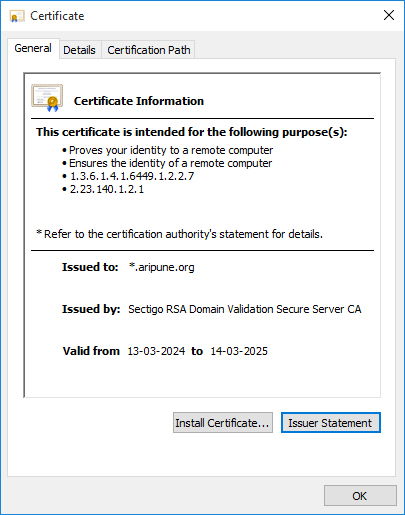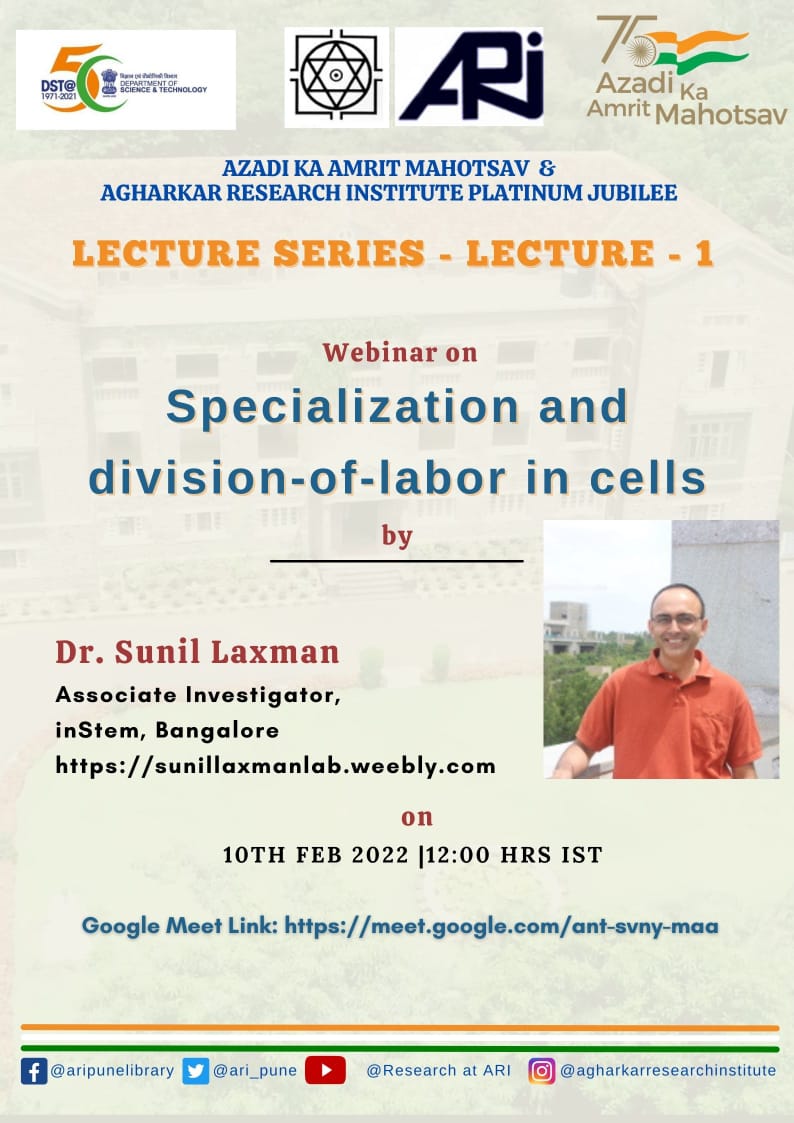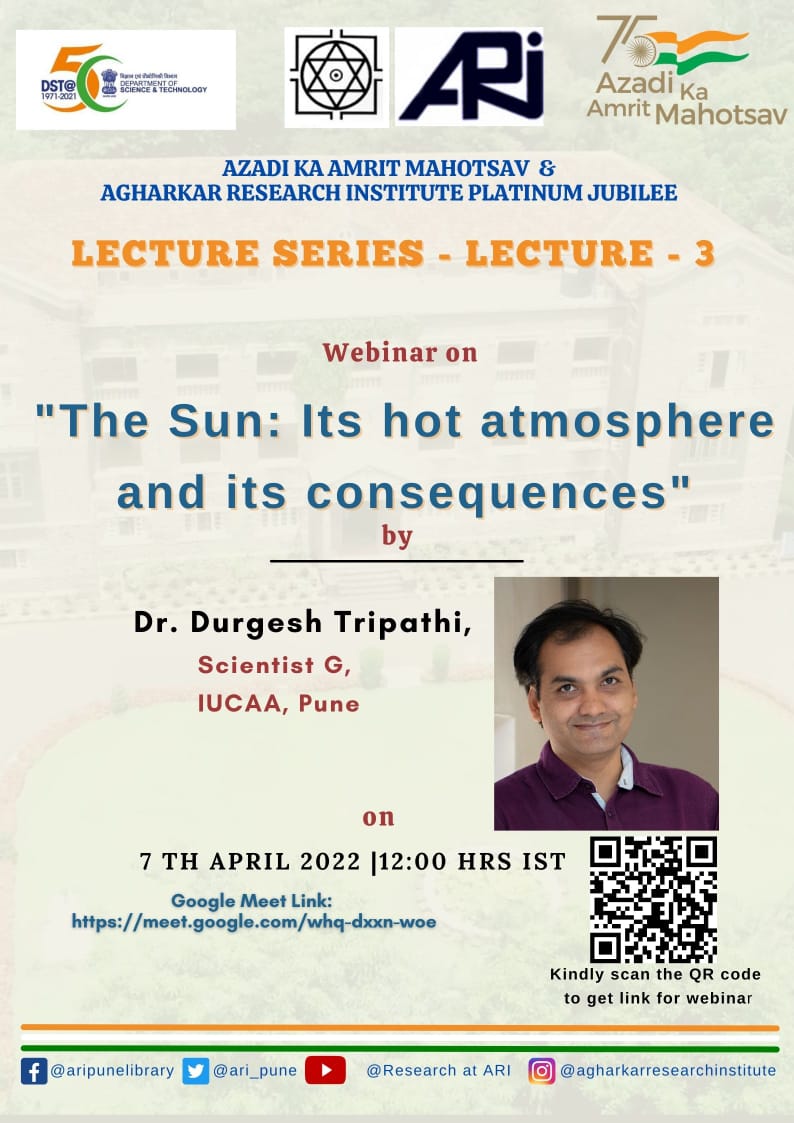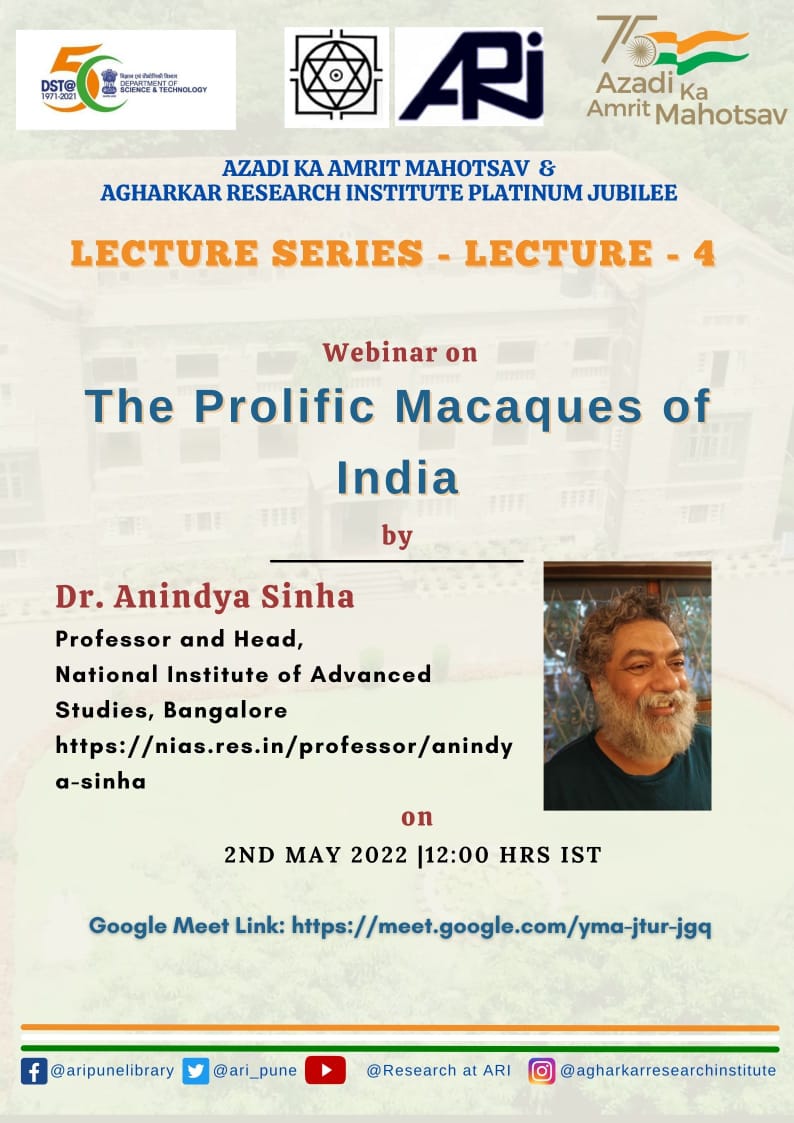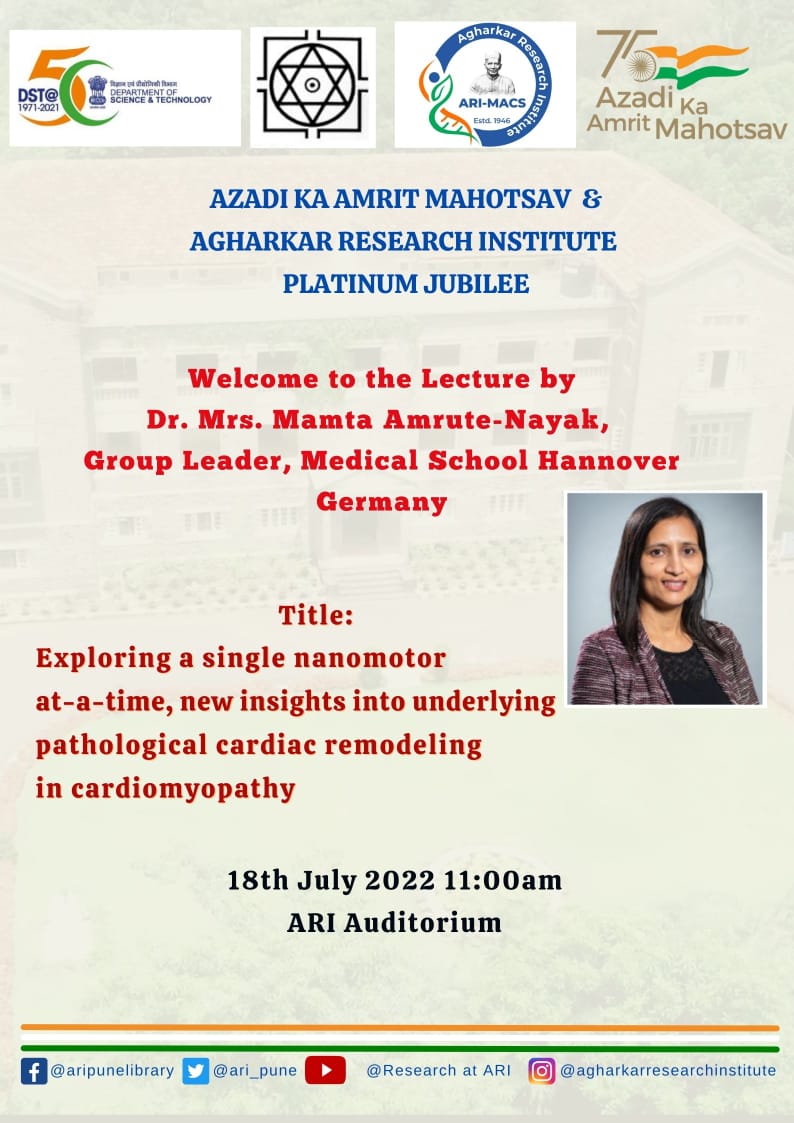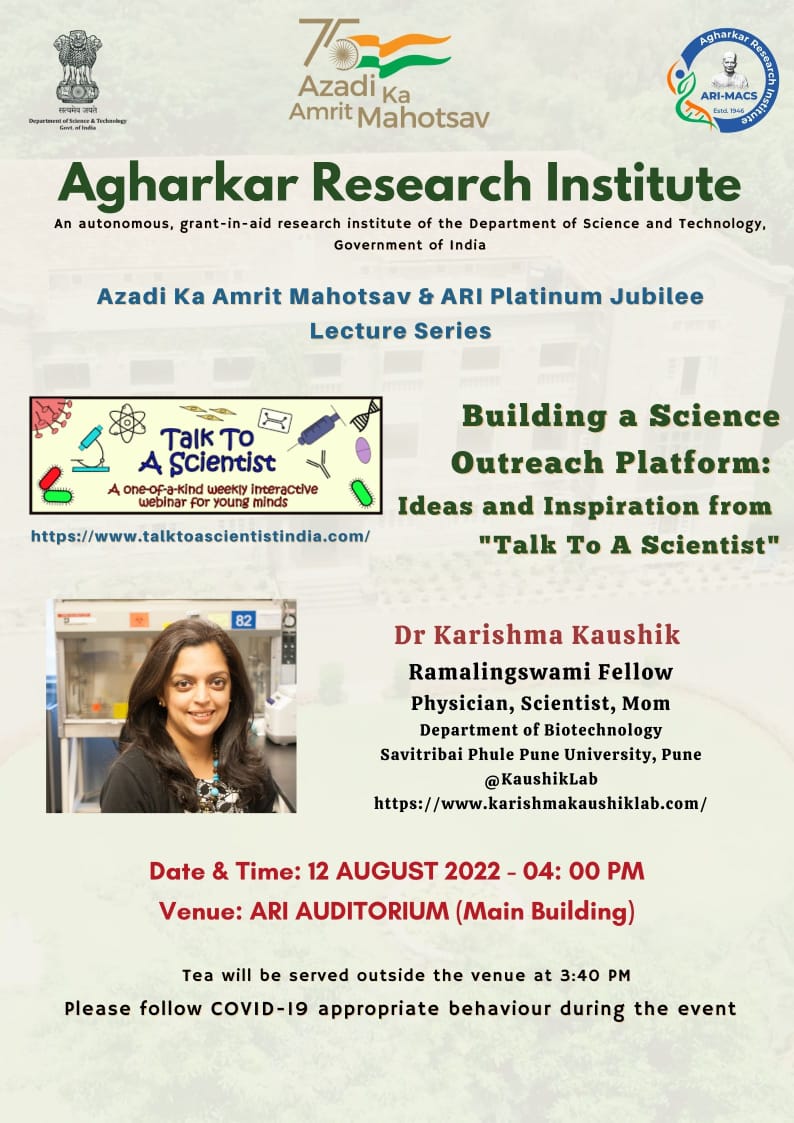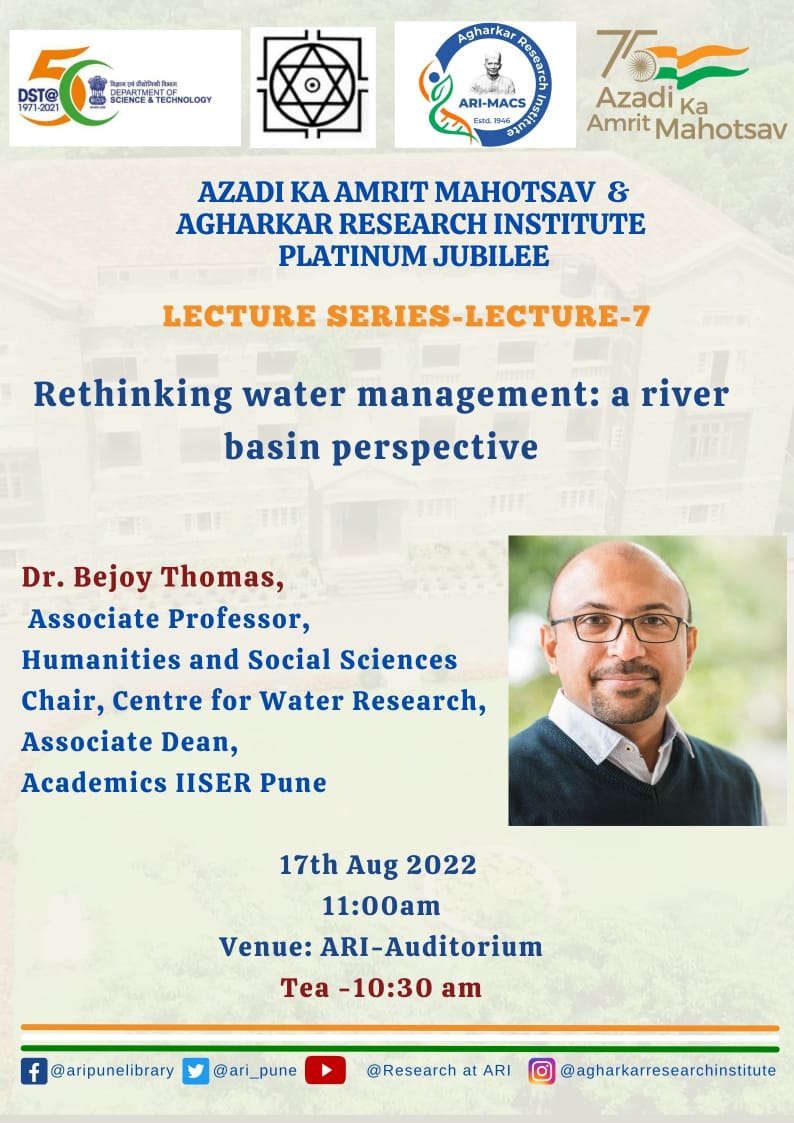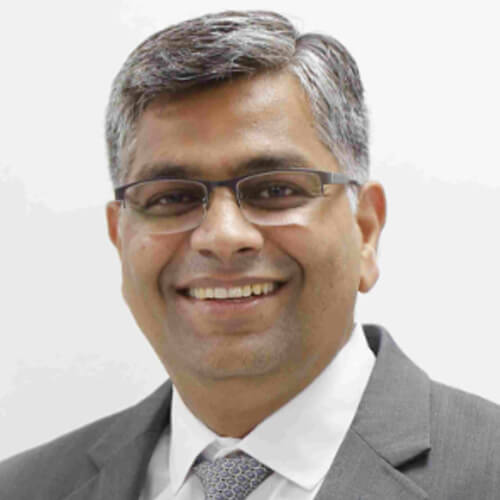
Google Scholar / Social Media
Name : Dr. Kamlesh Jangid
Designation : Scientist E
Brief Background :
An ardent microbiologist with over 15+ years in effective university teaching, productive government research and successful scientific-service industry career. Dr. Jangid completed his education in Microbiology from the University of Pune in 2005 with a Ph.D. on molecular taxonomy and quorum sensing from the National Centre for Cell Science (NCCS). His post doctorate in soil microbial ecology was with Prof. William Whitman at The University of Georgia (UGA), Athens USA. He returned to India in 2011 to set-up the world’s largest microbial culture collection, the National Centre for Microbial Resource (NCMR) located at NCCS, Pune. At NCMR-NCCS, Dr. Jangid played an instrumental role in developing NCMR as a world-class facility for microbial identification services. In August 2021, Dr. Jangid joined HiMedia Laboratories to set-up and Head Hi-Gx360® Solutions, offering top-of-the notch services in DNA sequencing and bioinformatics. Additionally, Dr. Jangid was the in-charge of research and development of diagnostic kits at HiMedia. In July 2023, he joined ARI as a full-time Scientist.
Dr. Jangid is a well-known international expert in the fields of microbiome, ecology, and soil science. Dr. Jangid serves as an Editor for Soil Biology and Biochemistry, PLoS ONE, and Frontiers Journals. He is also the current President of the Bergey’s International Society for Microbial Systematics (BISMiS). For his distinguished professional achievements, Dr. Jangid was awarded an honorary Academic Advisor appointment by the China Agricultural University, Beijing in 2018, and is the recipient of the 2017 Albert Nelson Lifetime Achievement Award by Marquis, USA. Dr. Jangid has also represented India at the Global Soil Biodiversity Conference in China in 2017.
Dr. Jangid is deeply committed to community science outreach. He actively delivers lectures and talks at national and international conferences as well as various schools, colleges, universities, and social organizations. Through these activities, Dr. Kamlesh Jangid is motivating today’s technologically advanced young generation toward scientific research.
Contact Details :
+91-20-25325115 (Office); +91-20-25325000 (Lab) , Fax : +91-20-25651542
Lab Website : https://microbial-lab.org/
- B.Sc. Microbiology, SPPU
- M.Sc. Microbiology, SPPU
- Ph.D. Microbiology, SPPU
Our team at the “MICROBIAL LAB” works on multiple aspects of microbial life, understanding its ecological role with an eventual aim of developing microbial strategies for a sustainable environment. We use a multidisciplinary approach using conventional microbiology as well as modern next-generation methods and computational analysis, to study microbial interactions in pure cultures (or in association with their animal or plant host) and in complex communities. We are particularly interested in the soil ecosystem as it relates to agricultural land management and pristine zones, such as sand dunes, glaciers, impact crater sites, etc. Our team works closely with specialists in botany, soil biochemistry, agronomy, statistics and bioinformatics to answer questions related to the tripartite interactions between plants, microbes and soil.
Our team is currently working in the following broader areas:
1. Characterization and utilization of available bioresources
2. Microbial community dynamics
3. Cell-cell communication aka. Quorum Sensing
4. Genome-based microbial systematics
5. Development of Software tools
Selected Publications:
- Lian J., Wang H., Deng, Y., Xu, M., Liu, S., Zhou, B., Jangid, K., and Duan, Y. 2022. Impact of long-term application of manure and inorganic fertilizers on common soil-bacteria in different soil types. Agriculture, Ecosystem and Environment 337: 108044. doi: 10.1016/j.agee.2022.108044
- Gopal, M., Bhute, S.S., Gupta, A., Prabhu, S.R., Thomas, G.V., Whitman, W.B., and Jangid K. 2017. Changes in structure and function of bacterial communities during coconut leaf vermicomposting. Antonie Van Leeuwenhoek 110: 1339.
- Shanmugam, S.G., Magbanua, Z.V., Williams, M.A., Jangid, K., Whitman, W.B., Peterson, D.G., and Kingery, W.L. 2017. Bacterial diversity patterns differ in soils developing in sub-tropical and cool-temperate ecosystems. Microbial Ecology 17: 556.
- Jangid, K., Kao, M.H., Lahamge, A., Rathbun, S.L., Williams, M.A., and Whitman, W.B. 2016. K-shuff: A novel algorithm for characterizing structural and compositional diversity in gene libraries. PLoS ONE 11: e0167634.
- Polkade, A., Mantri, S.S., Patwekar, U.J., and Jangid, K. 2016. Quorum sensing: an under-explored phenomenon in the phylum Actinobacteria. Frontiers in Microbiology 7: 131.
- Chaudhuri, S.R., Sharmin, J., Banerjee, S., Jayakrishnan, U., Saha, A., Mishra, M., Ghosh, M., Mukherjee, I., Banerjee, A., Jangid K., Sudarshan, M., Chakraborty, A., Ghosh, S., Nath, R., Banerjee, M., Singh, S.S., Saha, A.K., and Thakur, A.R. 2016. Novel microbial system developed from low-level radioactive waste treatment plant for environmental sustenance, p. 121-154. In Saleh, H. El-D. M., and Rahman, A. (eds), Management of Hazardous Wastes. InTech. doi: 10.5772/63323
- Lavecchia, A., Curci, M., Jangid, K., Whitman, W.B., Ricciuti, P., Pascazio, S., and Crecchio, C. 2015. Microbial 16S gene-based composition of a sorghum cropped rhizosphere soil under different fertilization managements. Biology and Fertility of Soils 51: 661-672.
- Jangid, K., Whitman, W.B., Condron, L. M., Turner, B. L., and Williams, M.A. 2013. Soil bacterial community succession during long-term ecosystem development. Molecular Ecology 22: 3415-3424.
- Prakash, O., Shouche, Y.S., Jangid, K., and Kostka, J.E. 2013. Microbial cultivation and the role of microbial resource centers in the omics era. Applied Microbiology and Biotechnology 91: 51-62.
- Jangid, K., Parameswaran, P. S., and Shouche, Y. S. 2012. A Variant Quorum Sensing System in Aeromonas veronii MTCC 3249. Sensors 12: 3814-3830.
- Jangid, K., Williams, M.A., Franzluebbers, A.J., Schmidt, T.M., Coleman, D.C., and Whitman, W.B. 2011. Land-use history has a stronger impact on soil microbial community composition than aboveground vegetation and soil properties. Soil Biology & Biochemistry 43: 2184-2193.
- Garcia, S.L., Jangid, K., Whitman, W.B., and Das, K.C. 2011. Transition of microbial communities during the adaption to anaerobic digestion of carrot pomace. Bioresource Technology 102: 7249-7256.
- Płaza, G. A., Jangid, K., Łukasik, K., Nałęcz-Jawecki, G., Berry, C., and Brigmon, R. L. 2008. Reduction of petroleum hydrocarbons and toxicity in refinery wastewater by bioremediation. Bulletin of Environmental Contamination and Toxicology 81: 329-333.
- Tarlera, S., Jangid, K., Ivester, A. H., Whitman, W. B., and Williams, M. A. 2008. Microbial community succession and bacterial diversity in soils during 77,000 years of ecosystem development. FEMS Microbiology Ecology 64: 129-140.
- Jangid, K., Kong, R., Patole, M. S., and Shouche, Y. S. 2007. luxRI homologs are universally present in the genus Aeromonas. BMC Microbiology 7: 93.
Selected Book Chapters:
- Rifaie, S.A., Patil, V., and Jangid. K. 2022. Advances in sequencing technology, databases and analyses tools for the assessment of microbial diversity, p. 317-347. In Gunjal, A., and Shinde, S. (eds.), Microbial Diversity and Ecology in Hotspot. Academic Press, USA. doi: 10.1016/B978-0-323-90148-2.00003-1
- Deonalli, D., Sharma, R., and Jangid, K. 2017. Microbial community dynamics during soil ecosystem development, p. 57-82. In Kalia, V.C., Shouche, Y.S., Purohit, H.J., and Rahi, P. (eds.), Mining of Microbial Wealth and MetaGenomics. Springer, Singapore.
- Sharma, R., and Jangid, K. 2016. Role of quorum sensing in fungal morphogenesis and pathogenesis, p.1-28. In Mérillon, J.M., and Ramawat, K.G and (eds.), Reference Series in Phytochemistry: Fungal Metabolites. Springer, GmbH.
- Sharma, R., and Jangid, K. 2015. Fungal quorum sensing inhibitors, p.237-257. In Kalia, V.C. (ed.), Quorum Sensing Vs Quorum Quenching: A Battle with No End in Sight. Springer, India.
- Singleton, D.R., Jangid, K., and Whitman, W. B. 2008. Origins of Microbial Life, p. 1-20. In R. Prince (ed.), Microbiology in Pharmaceutical Manufacturing, 2nd ed., vol. 1. DHI Publishing Ltd., Surrey UK.




